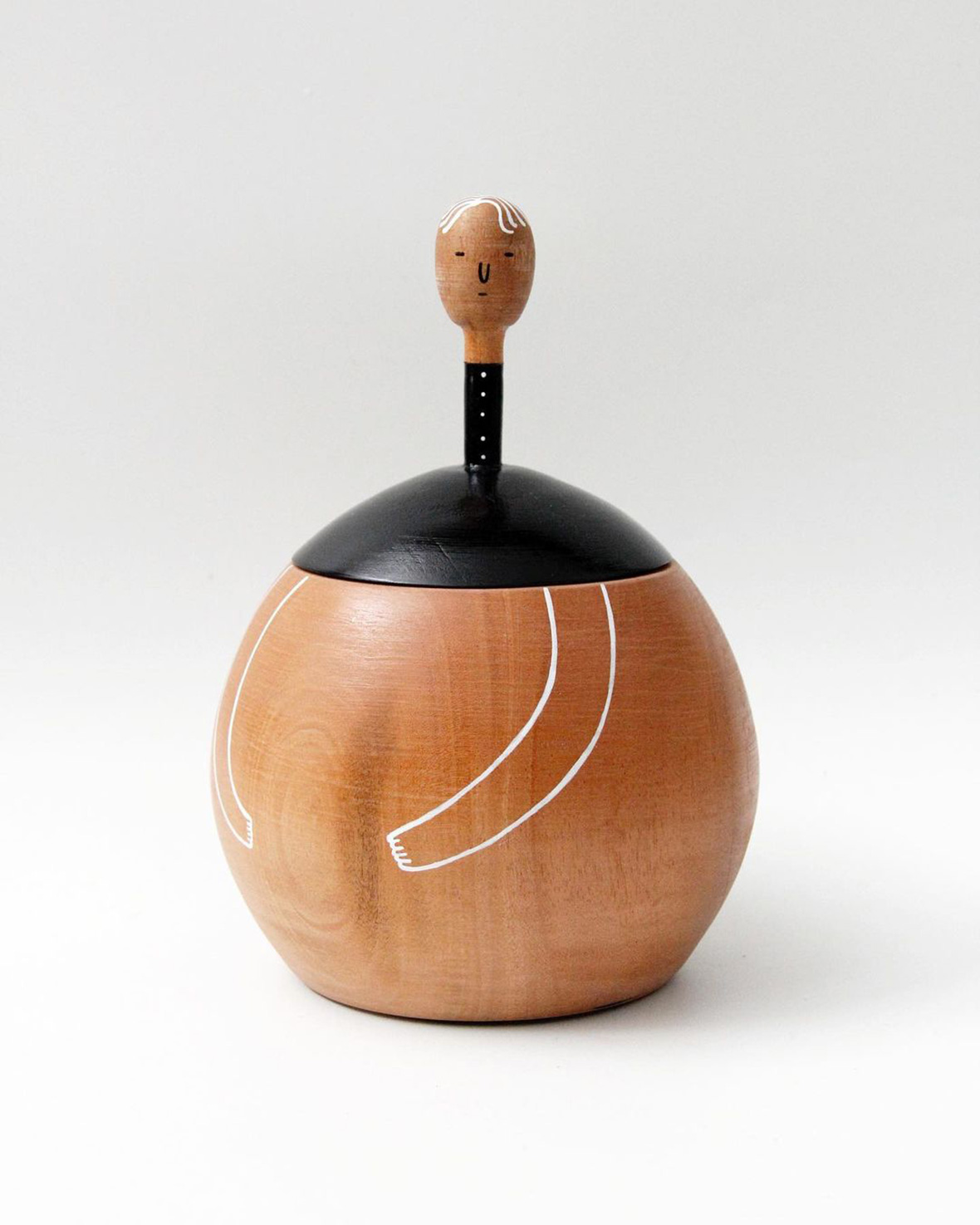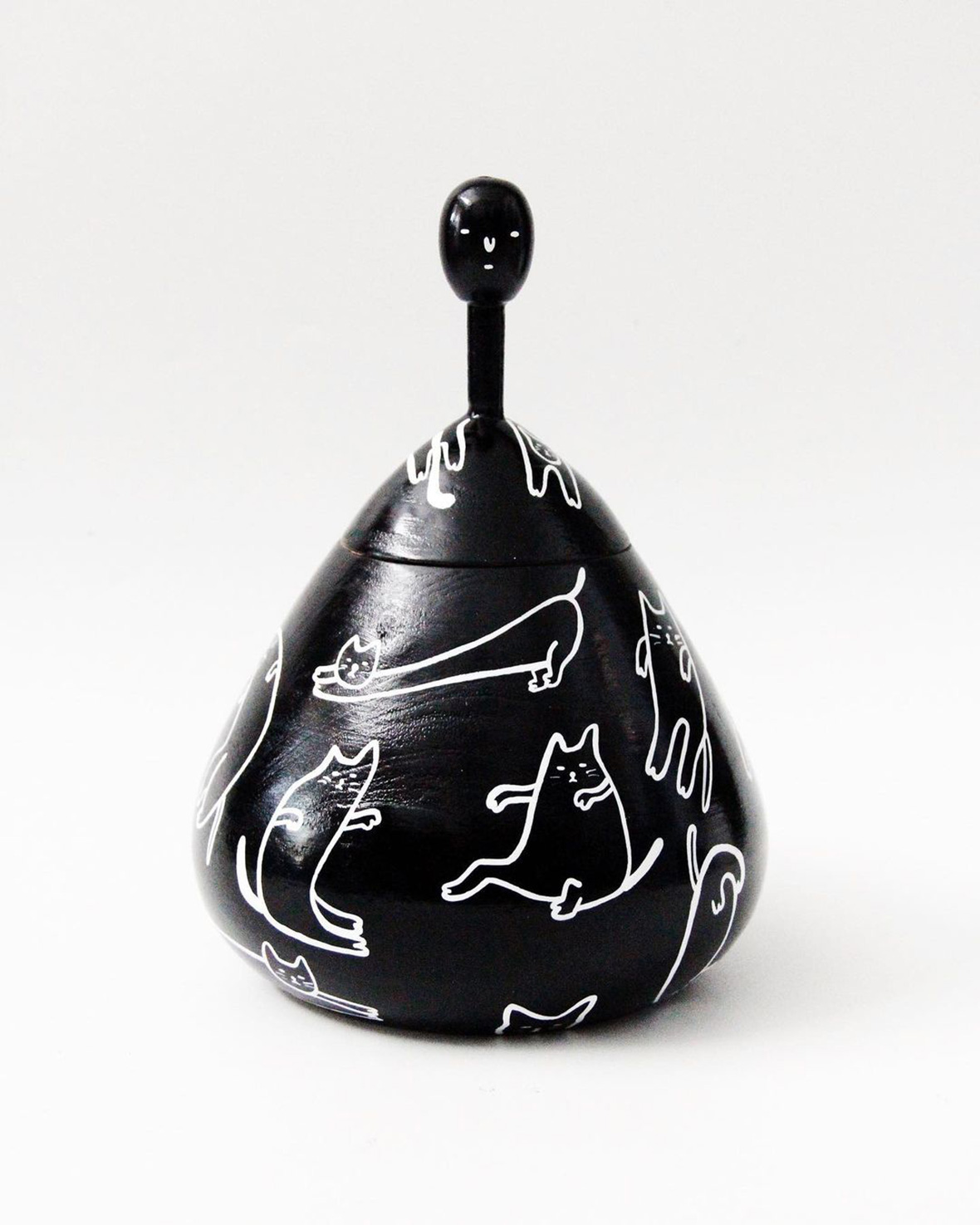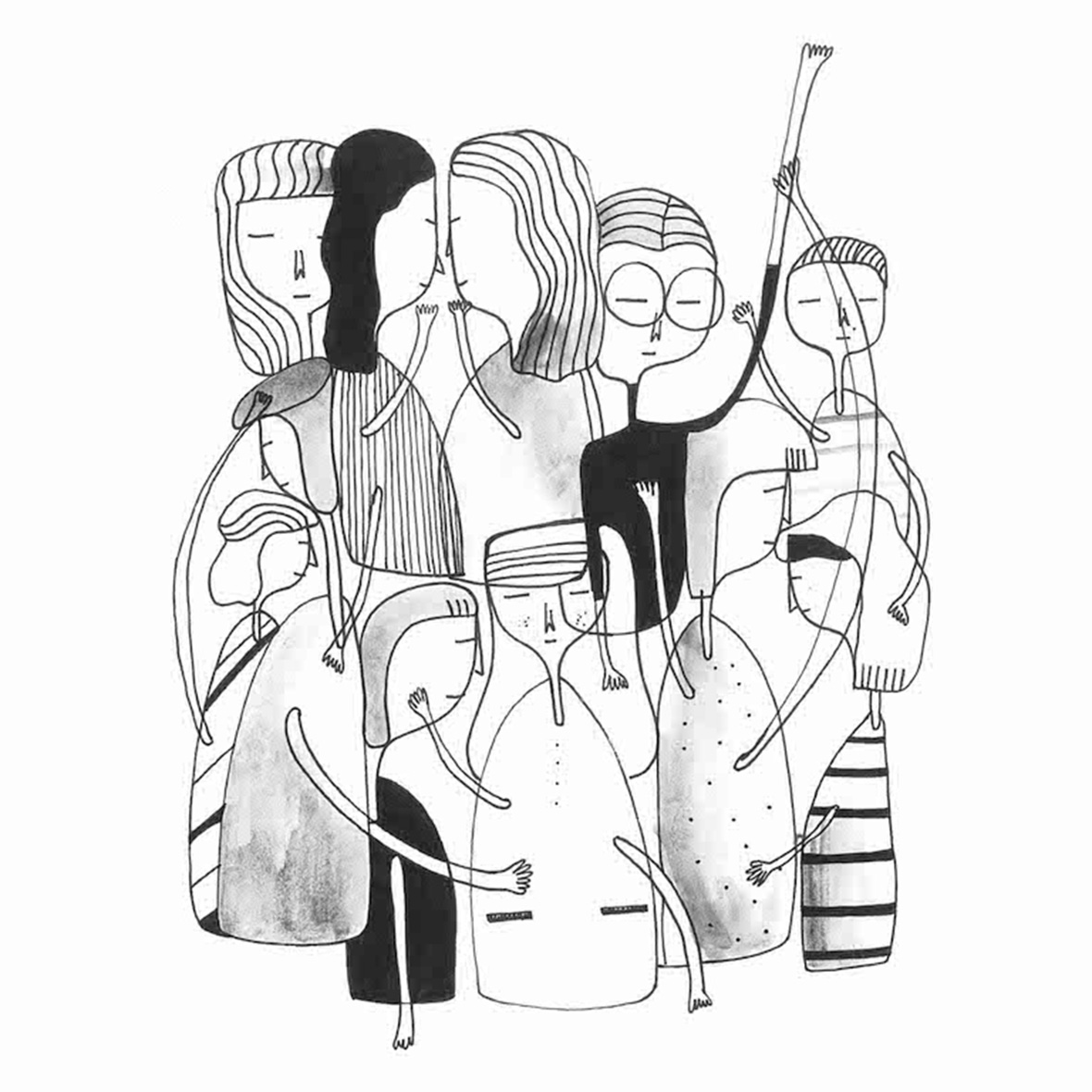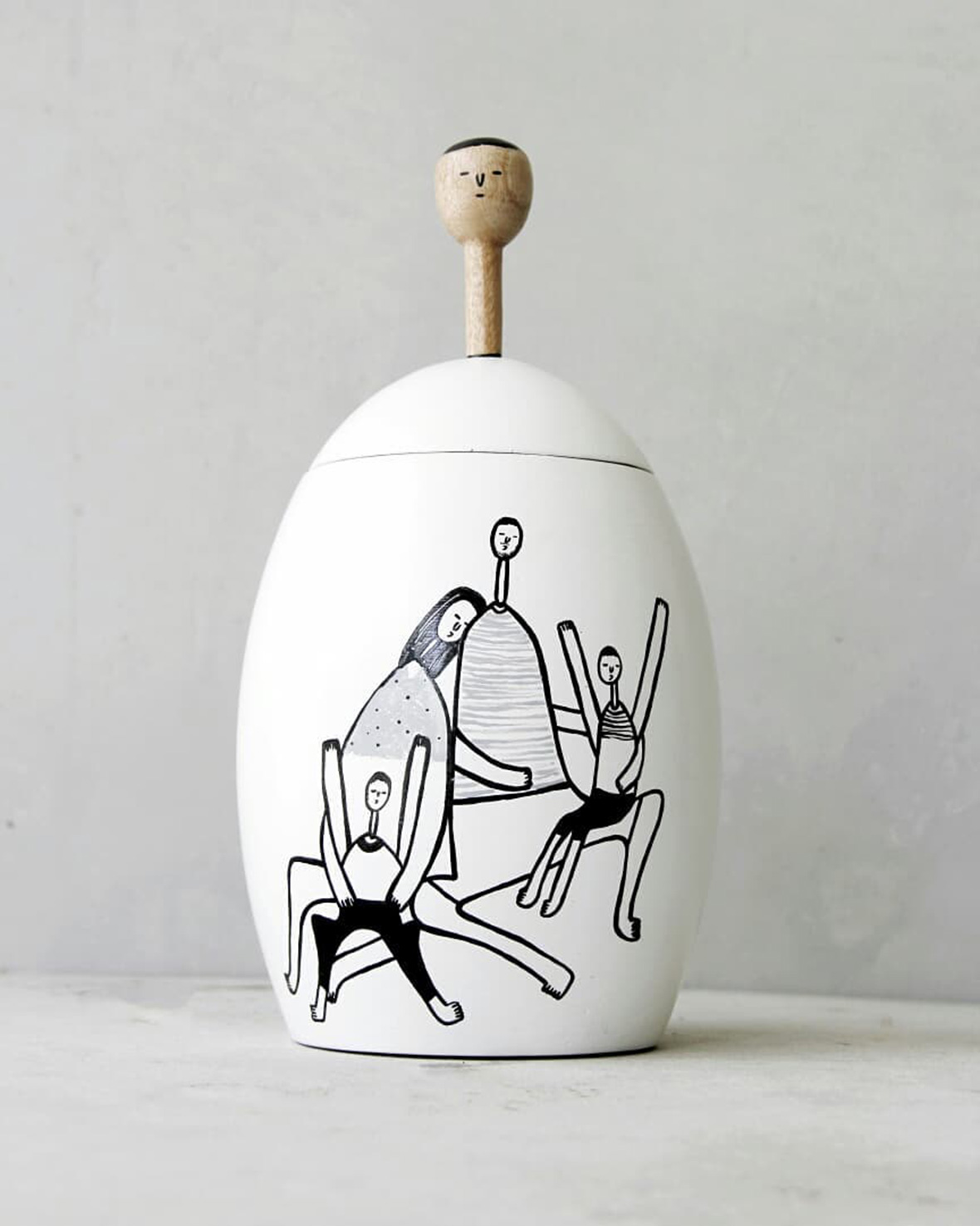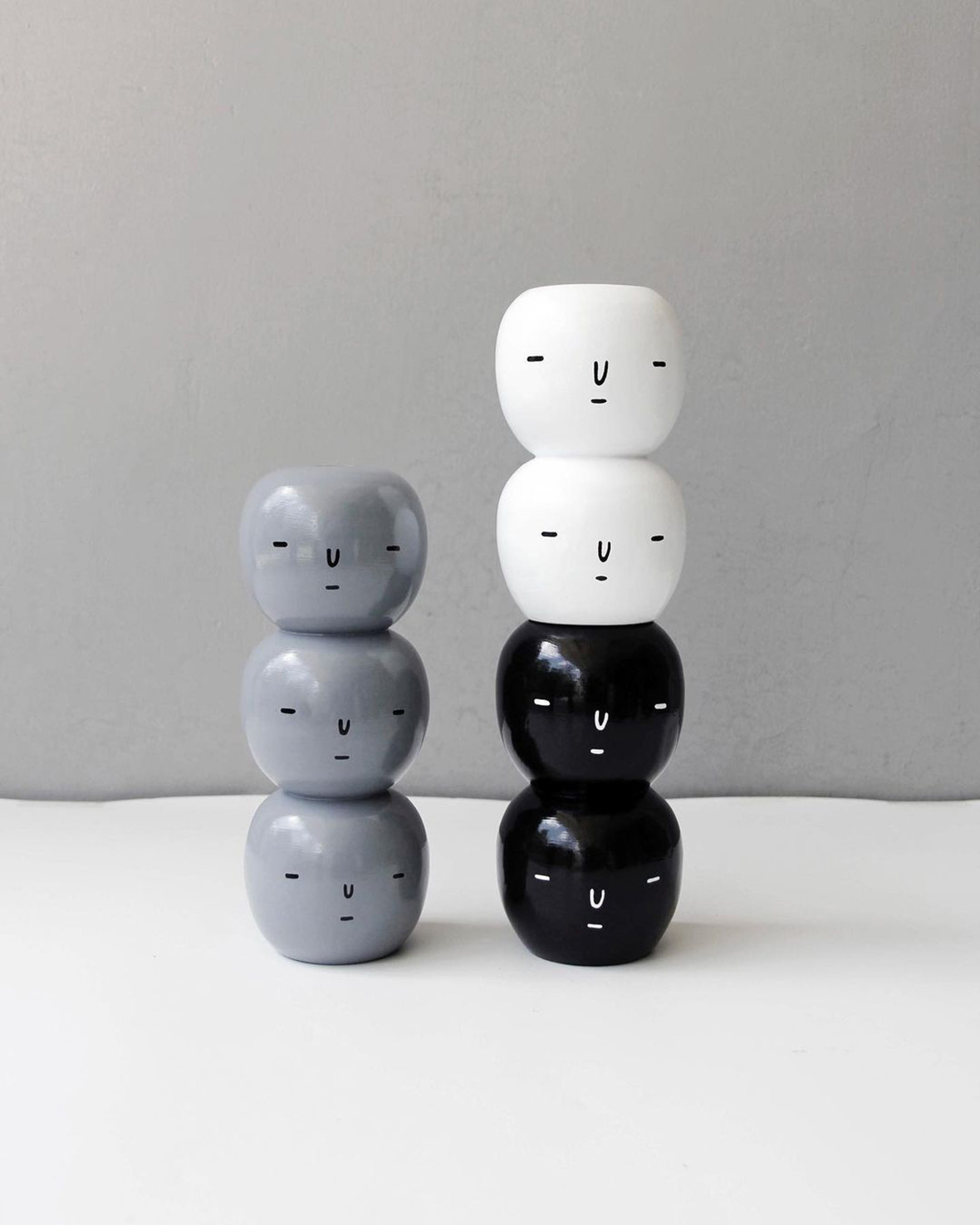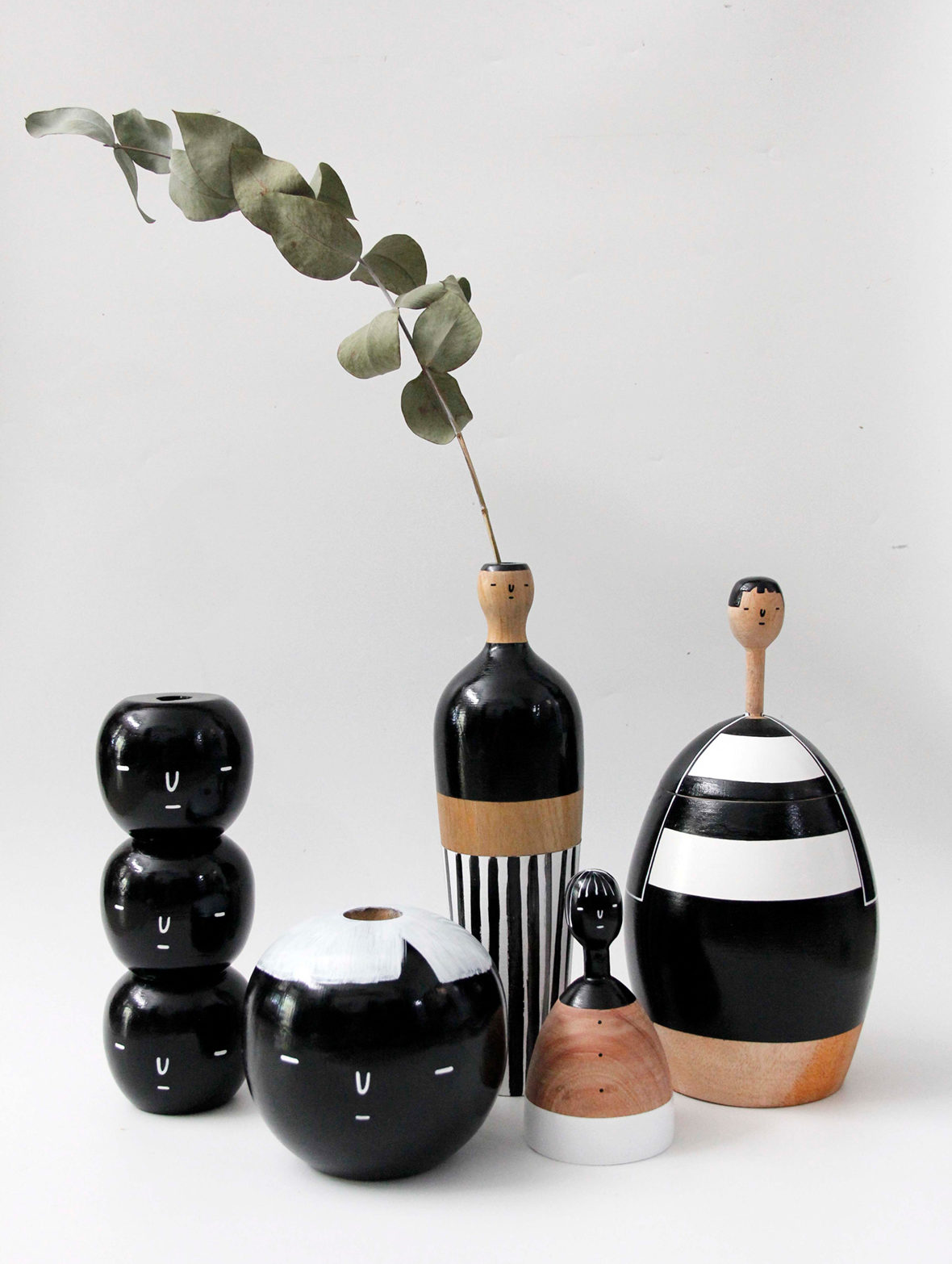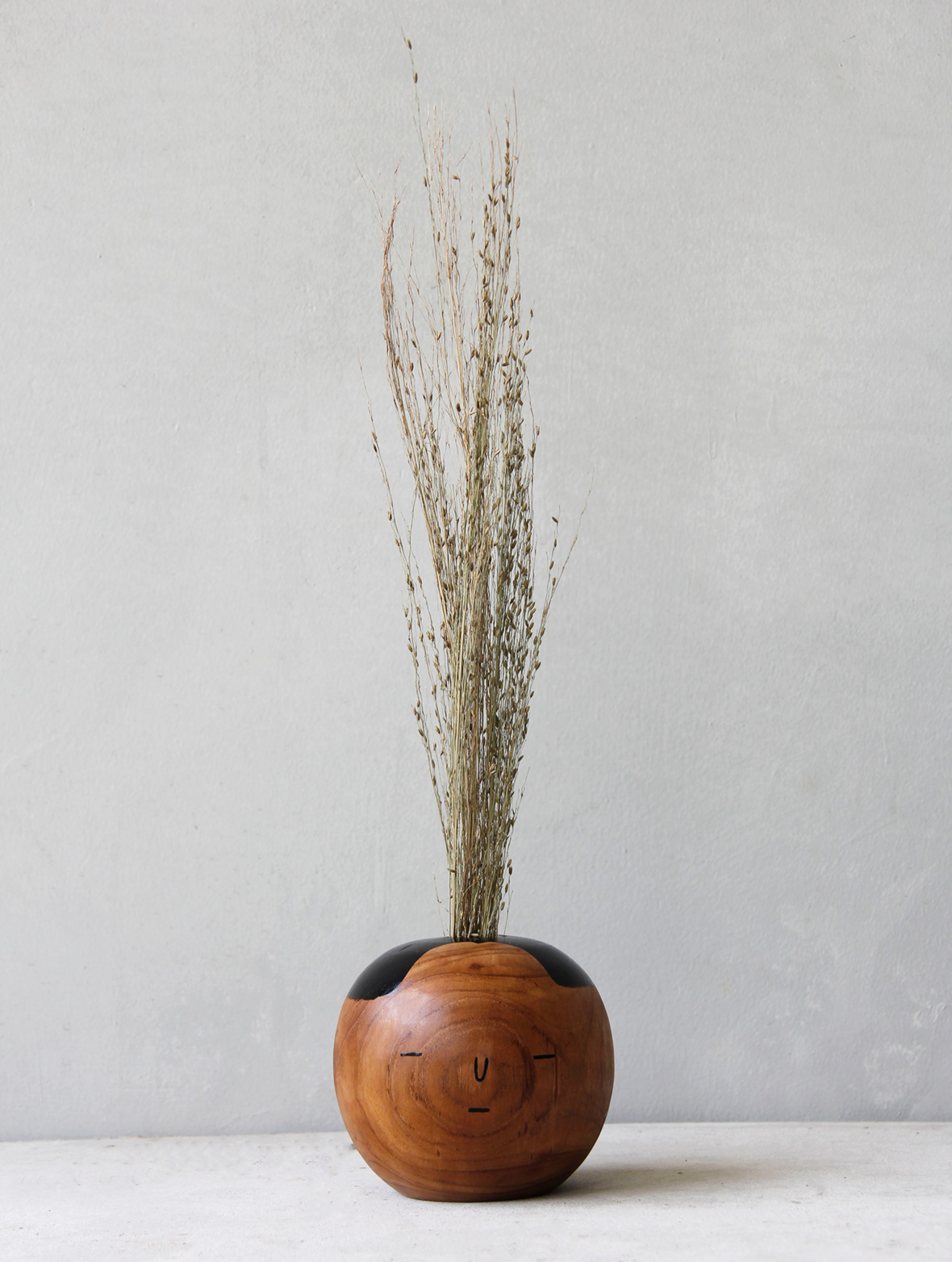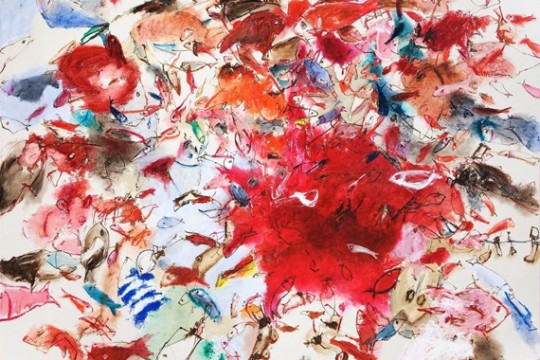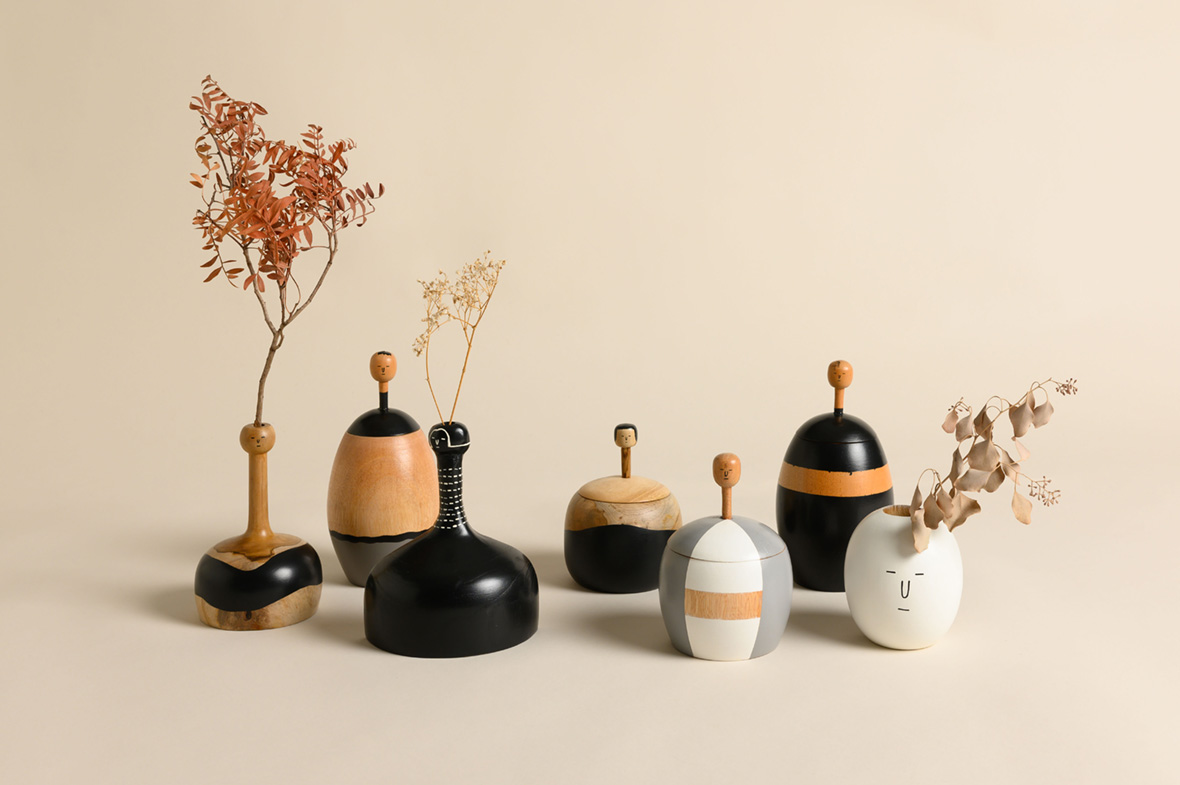
A minimalist elegance defines the work of Indonesian artist Tobing Dewi. Her oeuvre, released under the moniker Obie, consists of illustrations and wooden sculptures with similar pared-down features. In both mediums, the same cast of characters with elongated necks and squinted eyes take center stage. “Their faces kind of look like mine,” she chuckles. “When I was a kid, people always said my eyes closed when I laughed, so I wanted to recreate that.”
印度尼西亚艺术家 Tobing Dewi 的插画和木雕作品以极简著称。在她以 Obie 为艺名发表的一些列作品当中,一批长脖子、小眼睛的人物前来“做客”。“他们就是我”,Tobing 笑道,“小时候,人们常说我笑起来的时候眼睛眯会成一条缝。现在长大了,我想用艺术重拾那般笑容。”
Most of Dewi’s wood designs are based on characters who originally appeared in her illustrations. But in illustrative form, these characters have elongated limbs and necks that seem to bend every which way. When turned into vases or jars, their limbs are often painted on or gone entirely. However, their necks remain just as giraffe-like, sticking out of disproportional torsos in all shapes and sizes.
Tobing 木雕作品中的人物大多基于她的插画作品,但插画中的人物形象要更为具像,他们像是荡漾在风中的芦苇,四肢和脖子弯曲而修长。变身花瓶后,人物被画在瓶身,表现方式也更为抽象。
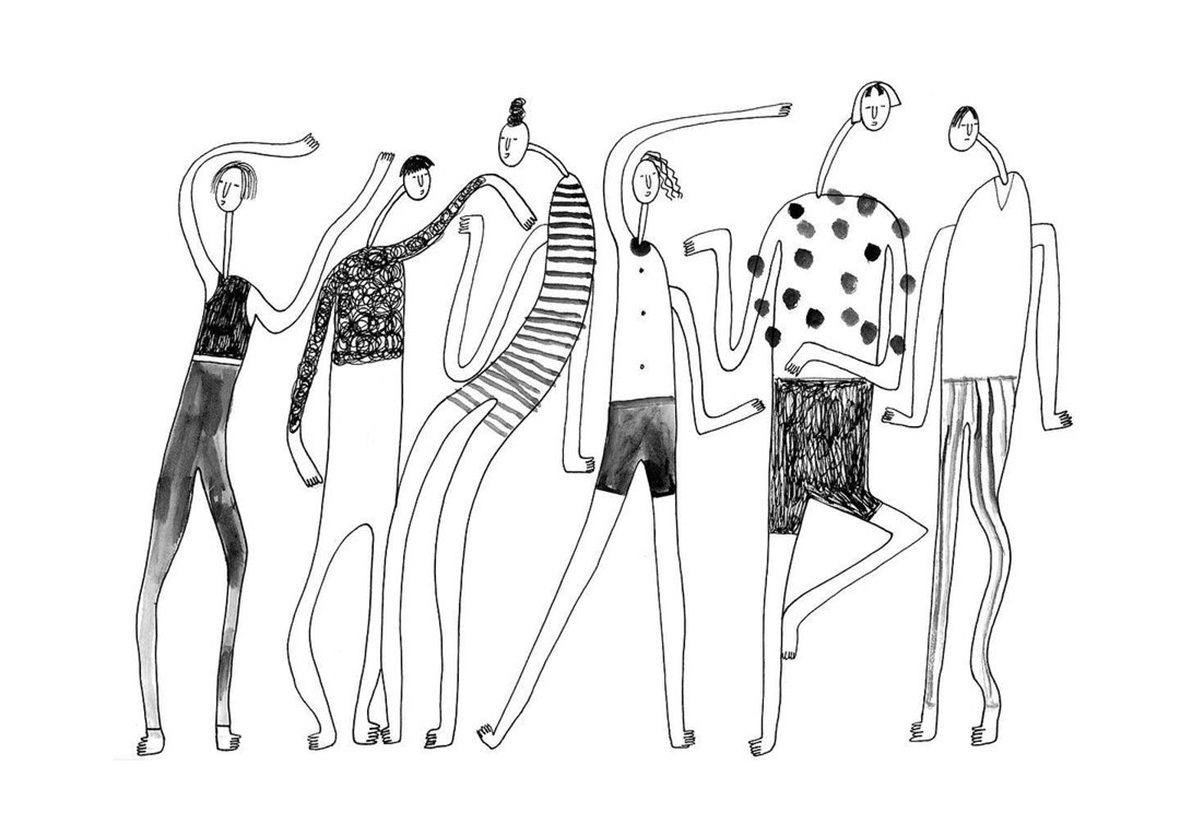
For a pear-shaped jar, the exterior was painted black while adorable cats in varying poses covered the exterior; the lid features an elongated neck with a bald, oval-shaped head on top. In a separate project, a collection of wooden dolls shaped like electric toothbrushes loaf about—their faces bear no discernible emotion, but they feel no less personable.
Tobing 创作过一只由黑色颜料涂满全身的梨形罐子,表面饰以形态各异的可爱小猫迎人。整个瓶身仿如一个人形,修长的脖子成为可取卸的瓶盖,椭圆形的脑袋成为瓶盖把手。在另一些作品以酷似电动牙刷的造型立足——他们面无表情,但看上去和蔼可亲。这样的瓶身设计也被沿用到了她的很多作品中
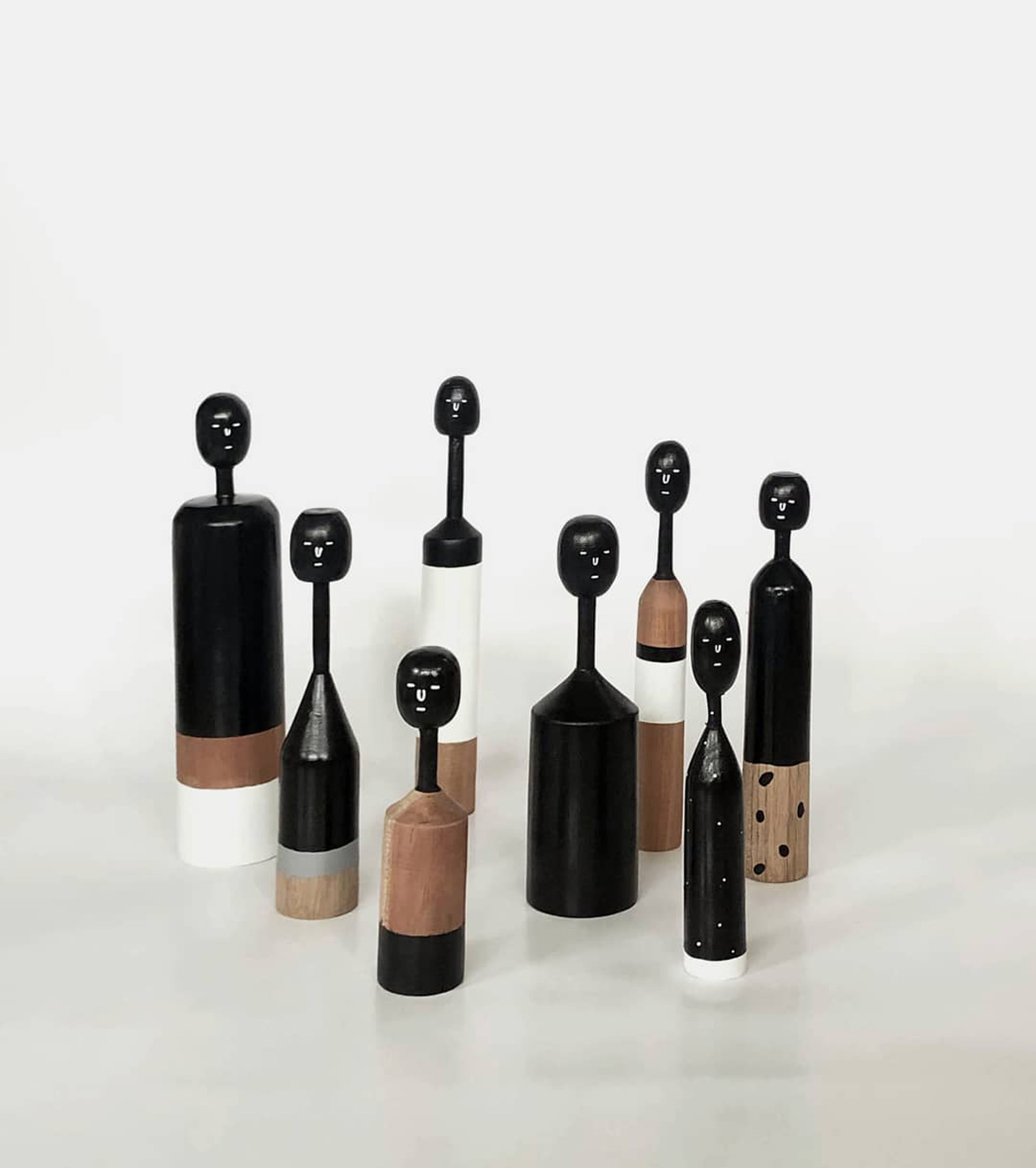
Dewi’s creative impulses first centered around illustrations back in 2015, and it’s a medium she still enjoys working with. But the idea of turning her drawings into a more tangible format was always in the back of her mind, and that first manifested in the form of simple, wooden dolls. In a particularly serendipitous illustration, when she observed the plump physique of the characters she drew, she realized their resemblance to jars and the potential of building upon this concept. This idea has stuck around ever since, and many of her characters have been turned into various lidded containers. “Hopefully, I’ll have the chance to try out other homeware designs,” she says. “It’s just so much fun.”
Tobing 第一次插画创作实在 2015 年,而她对插画的热情一直持续至现在。在创作途中,一个想法始终在她的脑海里挥之不去:将绘画以更为现实的艺术形式呈现出来。于是,她才以自己的插画作品为灵感,着手于各式各样的木质玩偶。在端详自己的每一幅插画时,她偶然发现人物胖乎乎的外形与罐子极为相似,恍然意识到可以利用这一点进行再创作。于是这一理念开始被践行,画中的角色摇身一变成为带盖容器。Tobing 坦言道:“这次尝试为我打开了一道大门,我开始对家居用品设计和工艺产生兴趣,往往让我沉迷其中。”
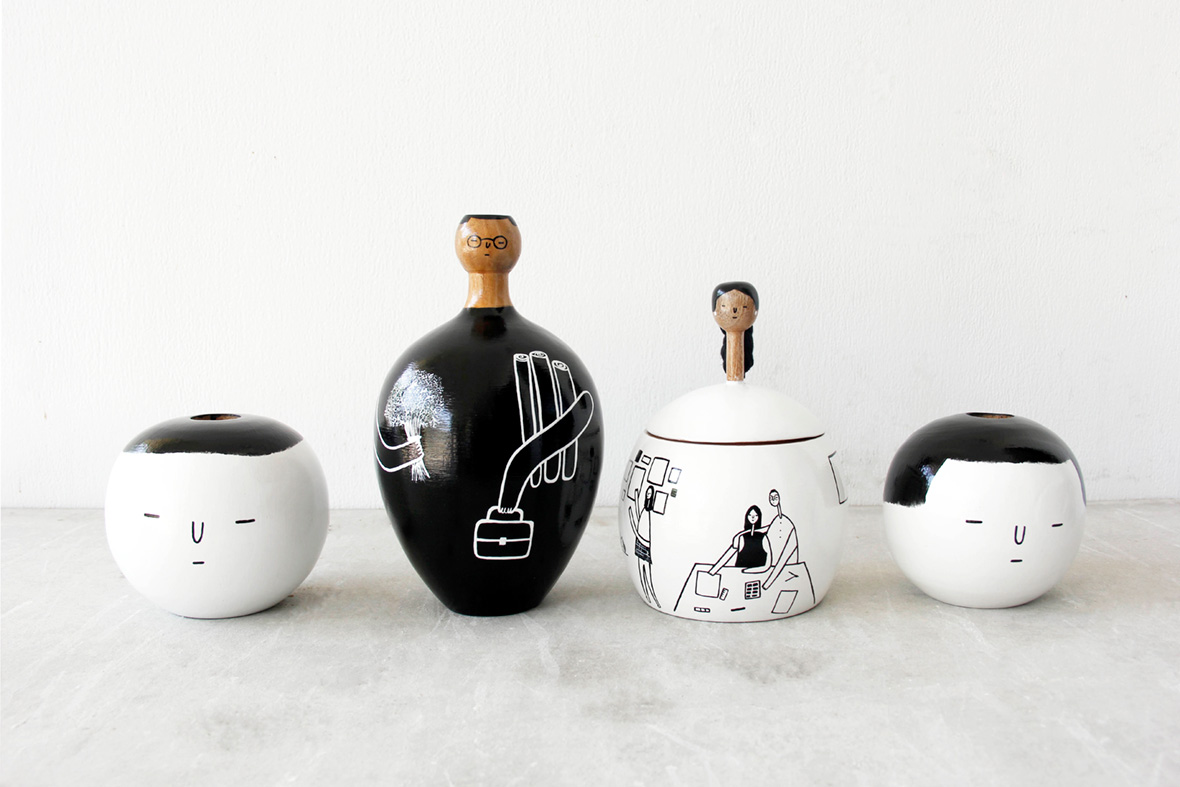
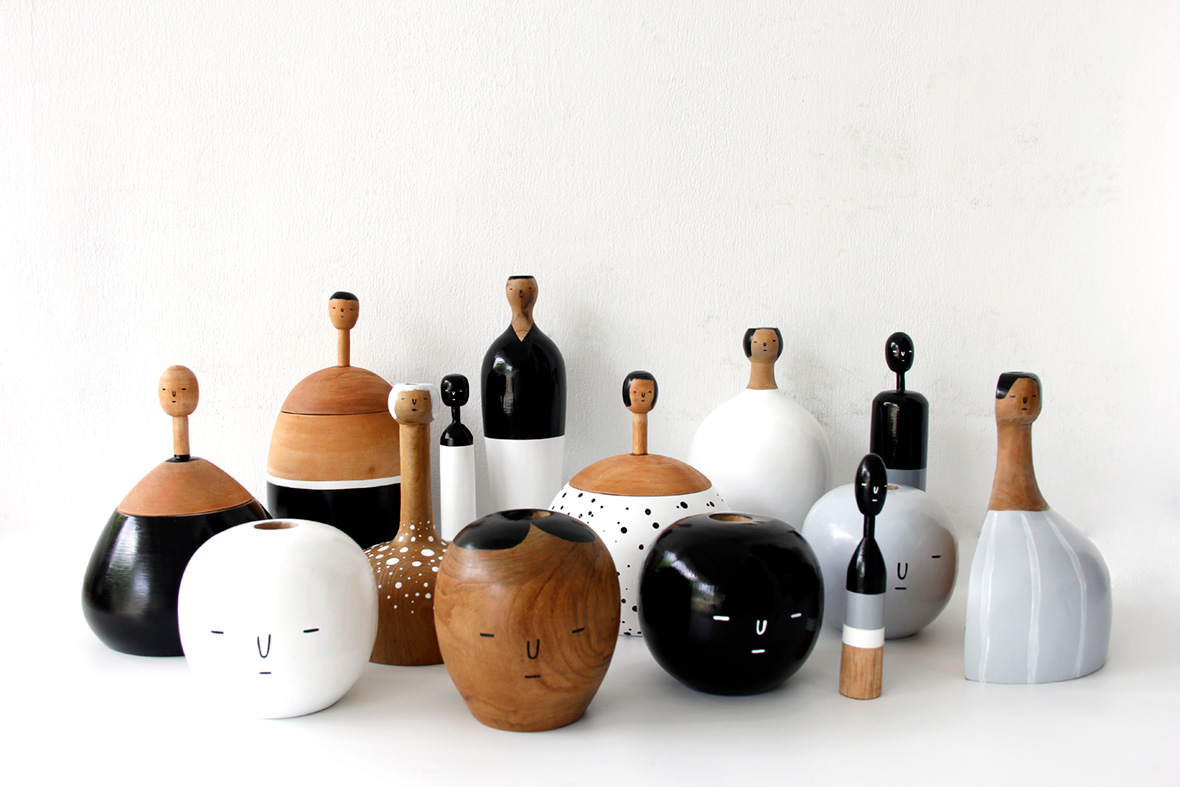
With her restrained use of colors, shapes, and patterns, Dewi’s designs carry an undeniable air of chic, though it’s one grounded in a sense of whimsy. Perhaps then, it’s not surprising that she’s found inspiration from fashion icons from around the world, such as Karl Lagerfield and Coco Chanel, who are given homage in her sculptures. Even fictional trendsetters such as Cruella de Vil have been reimagined as wood dolls in her signature style.
没有千变万化的色彩、形状和纹饰,让 Tobing 的作品看起来美得很接地气,又不失极简意味的时尚气质。她曾从 Kari Lagerfield 和 Coco Channel 等全球时尚界领军人物身上学到灵感,就连影视作品中的潮人 Cruella de Vil 也都摇身一变成为了独具特色的木偶。
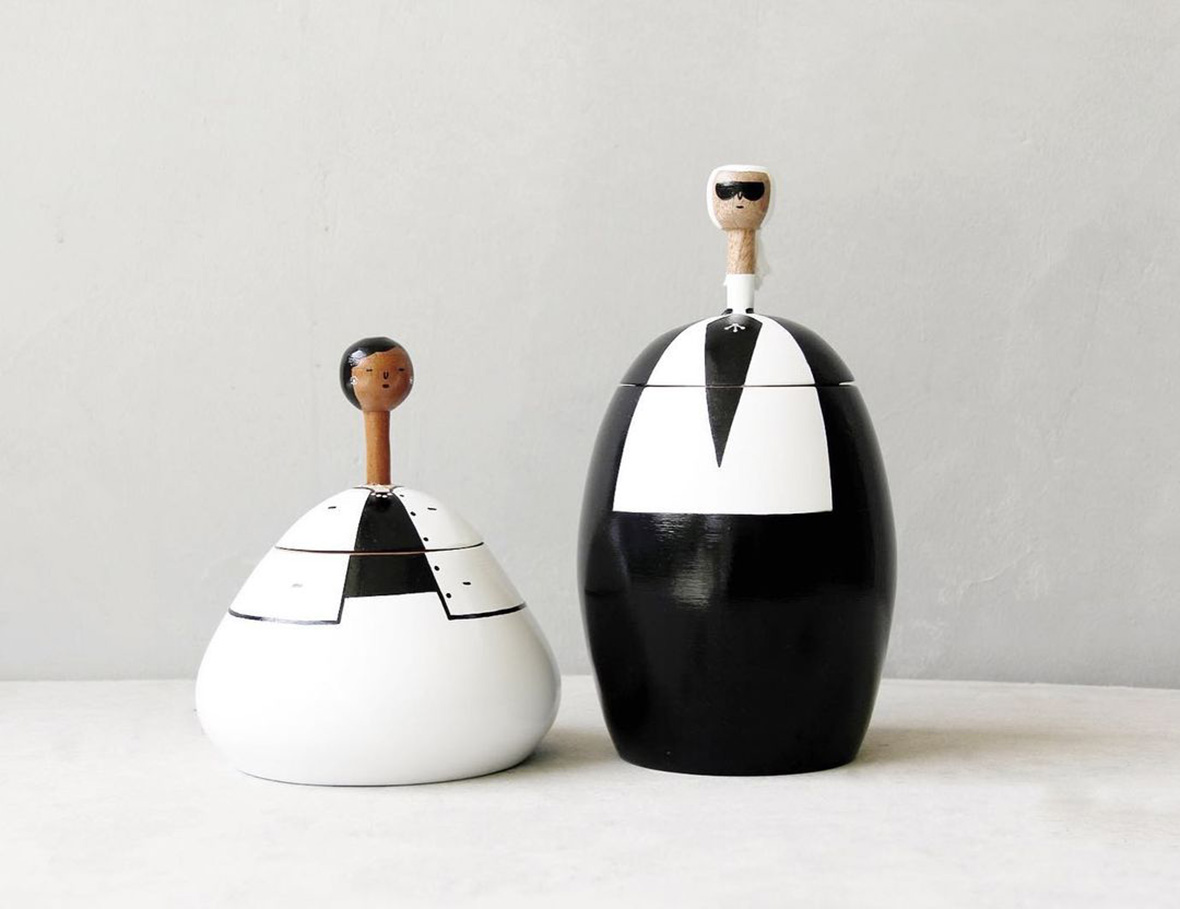
The style she’s now known for is one that Dewi is perfectly fine with building upon. The concept of a “comfort zone,” as Dewi sees it, shouldn’t necessarily always be seen in a negative light. She believes not straying far from what you know breeds consistency, and by being consistent, an artist will be able to further refine their visual language. “I’m happy to try new things, but I’m also happy to continue making works people know me by,” she says. “The characteristics that people know my work for are extremely important.”
可以说,Tobing 如今为人熟知的创作风格是她乐于探索和耕耘的成果。在她看来,眼下人们所抛弃的“舒适圈”也许对创作具有积极的方面。她认为,人们做事不应过于脱离其认知范围,这样才能产生事物的连贯性,这也是艺术家进一步优化作品视觉表达的前提之一。“我很乐意尝试其他风格,不过我更愿意一以贯之,继续创作为大众所熟知的艺术作品,往往独一无二、与自我契合的作品,更容易被人记住。”
Nearly all of Dewi’s works are for sale, but it’s not immediately obvious how one might be purchased—she has no online storefront. She prefers that customers talk to her directly, either via Instagram DMs or WhatsApp. “I don’t have time to manage a website, and besides, all of my products are limited edition; sometimes they might be one-of-one designs, so there’s no point in uploading them onto a website and deleting it when it’s sold out,” she says. “I don’t have a team that can help reply to messages.”
Though not the most convenient, the human-to-human interaction that she facilitates makes her work feel less transactional and more personal. This further sets her work apart from mass-manufactured products that litter store shelves—essentially soul-less items made in the sole interest of profit. In a time of mindless consumption and next-day shipping, Dewi believes that offering shoppers a touch of human warmth is all the more important. “It’s just better if people can talk to me directly,” she says. “That way, we can have a real discussion on the work that they might be interested in.”
几乎 Tobing 的全部作品都可供售卖。由于没有网店,大部分作品的销售环节都在 Instagram 和 WhatsApp 上进行。“我的每一件作品都是限量版,数量有限,绝不量产。有时候,甚至仅此一件”,而从运营到销售,都是 Tobing 一个人完成,她表示,“我也没有专门的运营团队来帮我回复大家的私信”。
人与人之间的直接互动虽不是最便捷的人际交往方式,但 Tobing 向来推崇,这也是为什么她的作品看起来人情味儿十足,完全看不出艺术家的功利心。而与大规模生产的产品相较而言,她的作品又进一步脱颖而出。产品在货架上比比皆是,但其生产的唯一目的就是获得收益,因此它们往往缺乏温度。在这盲目消费和犹豫消费盛行的时代,Tobing 相信使消费者感受到人情温暖至关重要。“我希望人们能直接和我联系”,她认为,“也欢迎志同道合的朋友,我们一起来聊聊。”

